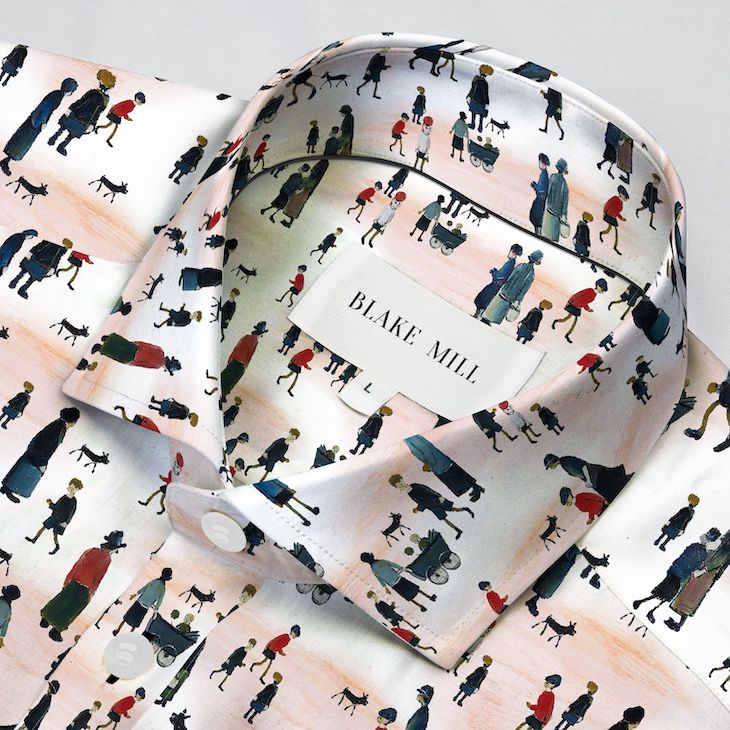Introducing Rakewell, Apollo’s wandering eye on the art world. Look out for regular posts taking a rakish perspective on art and museum stories
L.S. Lowry and fashion make for an unlikely pairing. In the industrial cityscapes that the painter is best known for, his ‘matchstick men’ are usually rendered through just a few details – a hat, perhaps a scarf, clothes in browns, ochres, reds. This is workaday wear: Lowry’s figures often seem to be hurrying to their shifts in the cotton mills of Manchester.
But perhaps it’s that context, of turning raw cotton into cloth, which has inspired the Manchester-based menswear designer Blake Mill to adapt one of those factory scenes to create its ‘Lowry Shirt’ – which borrows figures of women, children and dogs from the painting and reiterates them in a natty pattern and is yours in long or short sleeves for £109 or £104 respectively. The shirt has been created in partnership with the Lowry in Salford, which will receive 10 per cent from any sales.
In a press release, the garment is described as ‘featuring […] Lowry’s renowned painting Going to Work’, quoting a representative of the Lowry itself: ‘Going to Work is a quintessential Lowry piece and the characters depicted on this product range are unmistakably his creation.’ Perhaps everyone involved is as confused as your correspondent has been in recent months about going to work (or not): the figures on the shirt are unmistakeably Lowry’s, but from his Market Scene, Northern Town of 1939. Oops.

Detail of ‘Lowry Shirt’ by Blake Mill
Lowry did have a sartorial secret, it turns out. Among the works found after his death in 1976 are the ‘mannequin’ drawings, in which young women are depicted in rigid corsets and high heels, some with tutus and bows – probably private drawings, possibly erotic, and galvanised by the artist’s love for ballet. Will the menswear designers take up that challenge?
Got a story for Rakewell? Get in touch at rakewell@apollomag.com or via @Rakewelltweets.














![Masterpiece [Re]discovery 2022. Photo: Ben Fisher Photography, courtesy of Masterpiece London](http://zephr.apollo-magazine.com/wp-content/uploads/2022/07/MPL2022_4263.jpg)
‘Like landscape, his objects seem to breathe’: Gordon Baldwin (1932–2025)